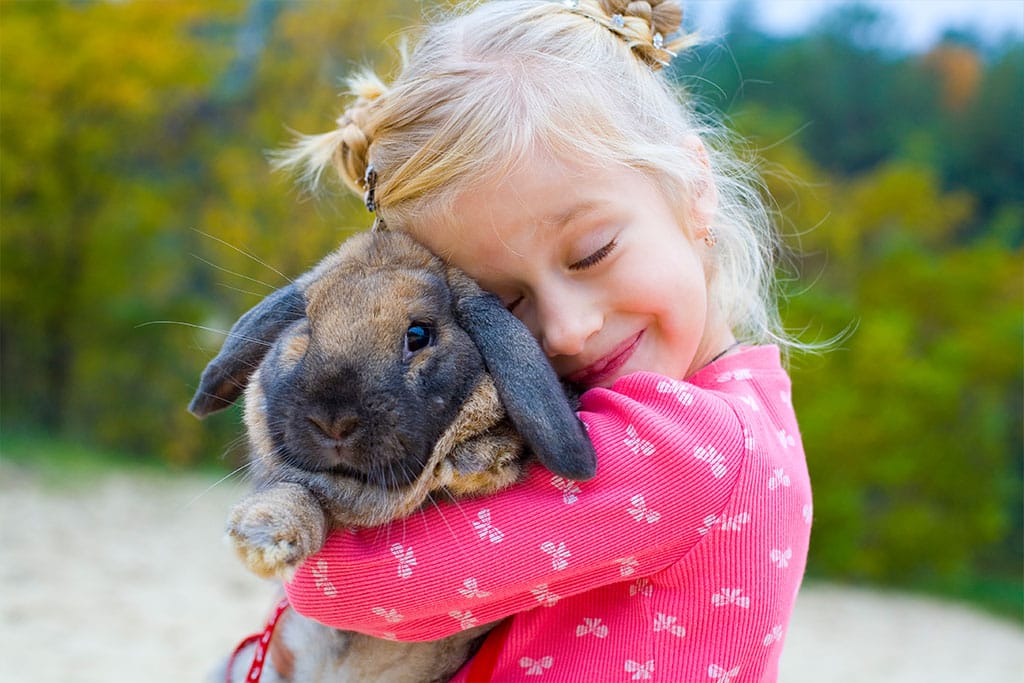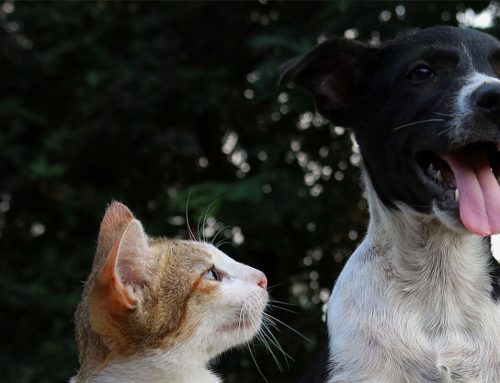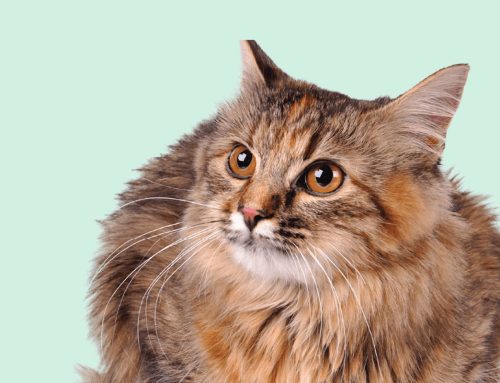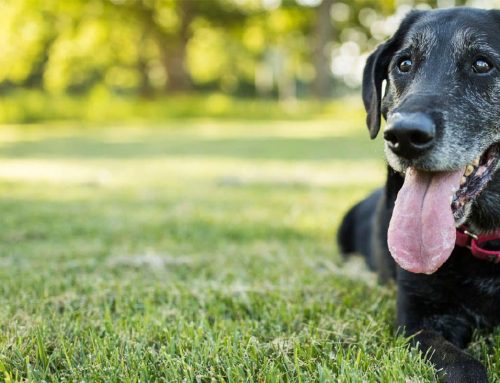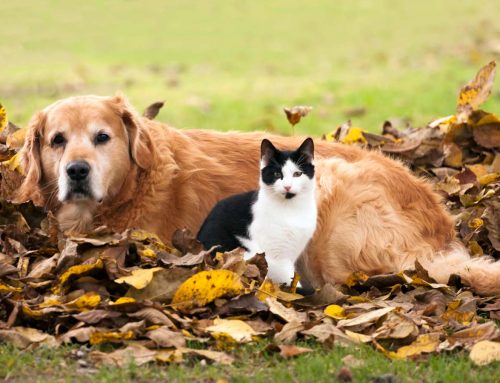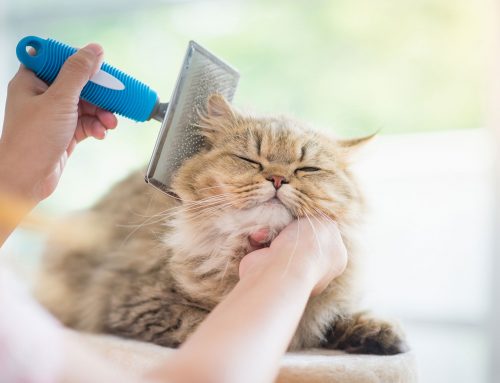| QUICK FACTS | |
| Lifespan: | 5-8 years + |
| Breeding onset: | Males – 4-9 months (earlier for dwarf breeds) |
| Gestation (pregnancy length): | Females – 5-10 months (earlier for dwarf breeds) |
| 29-35 days | |
| Litter size: | 4-10 |
No breeding season – can breed any time of the year.
Weaning age: 4-6 weeks
NUTRITION
Rabbits are herbivores (vegetarians) that digest their food in their large intestines like guinea pigs, chinchillas and horses do. They have relatively small stomachs compared with the size of their caecum (blind pouch of the large intestine). Gastrointestinal problems are common in rabbits if the diet is not right.
Fibre is the most important part of a rabbits diet.
Fibre helps maintain the correct balance of good “bugs” in the intestine and keeps the gastrointestinal tract (GIT) moving.
Rabbits are “nibblers” when it comes to feeding. They feed continuously, not in set meal times like carnivores (cats) or omnivores (dogs, people).
Good quality hay should be fed free choice. Grass is another very good fibre source. Green leafy vegetables are also important (except Iceberg lettuce which tends to have lower fibre content and is mostly water). Generally try to feed at least 1 cup per kg bodyweight per day of these veges or unlimited grass.
Examples include dandelions (NOT buttercups which are toxic), turnip tops, carrot tops, beet greens, parsley, bok choy, lettuce mixes – red, green etc, mint, silverbeet, basil
Pellets are not essential. They should only comprise 20% of diet maximum. This equates to about 1/8 cup per kg per day for maintenance for a fully grown rabbit (4-8 months of age). Need to have a fibre content of at least 18% and protein approximately 14%. They are too high in calories and not high enough in fibre when fed in large amounts or as a large part of the diet.
OK to feed small amounts of fibrous fruit and other “treat” items each day unless the bunny is on a diet. This includes apple, carrot, pear, peach, plum, strawberries, blueberries, mango, papaya, pineapple. Maximum of 1 tablespoon per 2kg per day.
NO bananas or grapes (too high in sugar) or cereals, grain, bread, biscuits, crackers, peas, corn or potatoes. The fibre levels are too low and sugar/starch levels are high. Avoid avocados, daffodils, rhubarb, onions, mushrooms, lilies, rhododendrons, azaleas, ragwort.
Supply plenty of fresh water (at least 100mL per kg per day is a normal amount of water intake). Sipper bottles are easier to keep clean.
HOUSING
In general, bigger is better.
Hutches should:
- Be constructed of durable materials that are not easily destroyed by the weather or your rabbit and are easy to clean properly. Treated timber should not be used where it may be eaten by your rabbit.
- Be high enough for your rabbit to stretch.
- Be large enough to allow to hop 3 or 4 times. Approximately 150cm long by 60cm wide is a good size.
- Have a second story/level if possible.
- Have at least 1/3rd of floor area as a solid surface. Wire is harsh on the feet as bunnies have no pads.
- Have an enclosed den/sleeping area, raised off the ground. This floor should be covered with a thick layer of bedding such as shredded paper, hay or straw or wood shavings. Cedar and pine can be irritating to the respiratory system.
- Be cleaned out a least once or twice a week. Urine and faeces should not be allowed to accumulate under the hutch as flies will be attracted.
- Be easily moved if on grass. Have a dig proof bottom.
- Be kept in a sheltered area that is not in direct sun. Rabbits are very sensitive to heat (more than 24 degrees). They tolerate cold better.
Protect from rain and wind too. However there should be good ventilation. Rabbits can be kept indoors and trained to use a litter tray. Watch electric cables and other items inside that may be chewed!
HANDLING
Rabbits have very powerful hind legs with sharp nails. This means that care
must be taken when lifting, holding and carrying rabbits. Incorrect handling can cause injury to either the handler or rabbit.
Do not lift by the ears. Can hold scruff like a cat or behind the front legs whilst supporting hind quarters either sitting up on their backs in a C shape or in a normal standing position.
Transport in a pet box or carrier/cage which has good ventilation.
ENRICHMENT
Providing a variety of rabbit safe toys will encourage exercise and decrease boredom.
The best toys are also cheap and easy to come by. Dried pine cones, old phone books, hard plastic baby chew toys, empty toilet or paper towel rolls and untreated cardboard boxes are all good. Vegetables can be hidden to allow foraging behaviour which also provides mental stimulation.
Early handling is a must. Try to handle frequently. Can easily clicker train. Check You tube videos for clicker bunny or www.clickerbunny.com
Native branches, untreated wood or specific commercial wooden chew blocks should be provided for gnawing. This helps to prevent dental disease as does hay.
Tunnels, play pens or supervised outside or inside time are helpful for exercise. Plastic paddle pools filled with dirt can be used for digging.
General maintenance and health care
Groom at least twice a week to help removal of loose, moulted hair which is very fine. Trim nails as required. Check bottom is clean of faeces.
Perform a quick thorough examination every day or two. Check eyes, nose, ears as well as the mouth and teeth. Check the skin for small parasites (fleas, lice, mites, fly larvae(maggots) and scale, scabs or wounds. Feel for any swellings that may indicate the presence of an abscess.
Remember that rabbits do not show signs of illness until they are often already very ill. If any signs of lethargy, poor appetite or more specific problems such as weepy eyes, diarrhoea or sneezing are noticed, do not hesitate to contact the vet.
Good diet and husbandry will help to prevent a large number of problems.
An annual vet check is recommended to check teeth, vaccinate against Rabbit Calicivirus Disease and assess other body organs for signs of disease.
The vaccine is administered once at or after 10-12 weeks then yearly.
De-sexing is recommended. Males are castrated and females speyed like young cats are.

